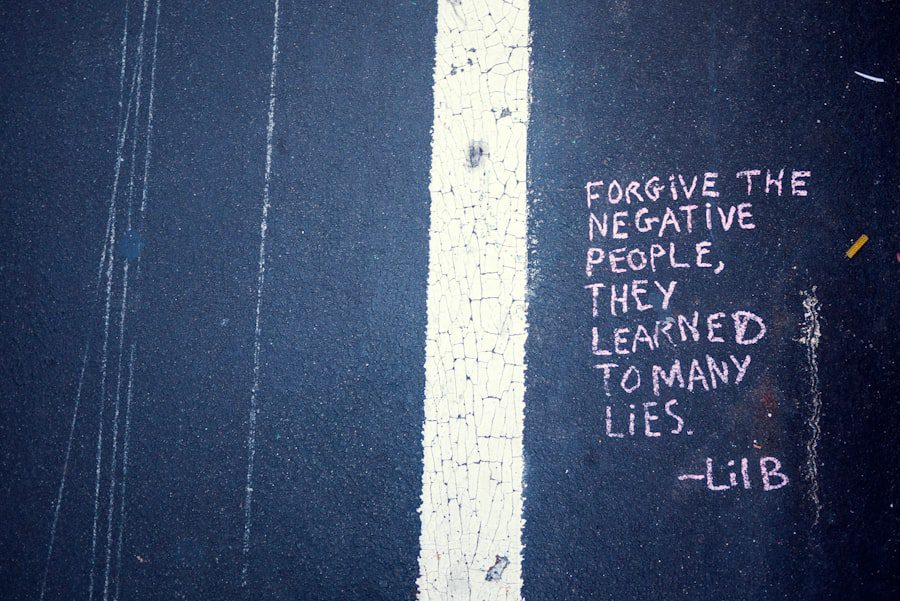Childhood trauma is a profound and often misunderstood experience that can leave lasting imprints on an individual’s psyche. As you reflect on your own life, you may recognise that trauma can stem from various sources, including neglect, abuse, or even the emotional unavailability of caregivers. These experiences, particularly during formative years, can shape your beliefs, behaviours, and emotional responses well into adulthood.
The impact of such trauma is not merely a fleeting moment; it can manifest in various ways, affecting your relationships, self-esteem, and overall mental health. Recognising the signs of childhood trauma is the first step towards healing. You might find yourself grappling with feelings of anxiety, depression, or a pervasive sense of unworthiness.
These feelings often arise from the internalised messages received during those early years. Understanding that these reactions are rooted in past experiences can be liberating. It allows you to begin the journey of untangling the complex web of emotions and beliefs that have been woven into your identity.
By acknowledging the existence of childhood trauma, you empower yourself to seek healing and transformation.
Summary
- Childhood trauma can have long-lasting effects on an individual’s mental and emotional well-being.
- Spiritual hypnosis can play a significant role in healing childhood trauma by accessing the subconscious mind.
- Exploring the subconscious mind can help uncover deep-seated emotional blocks and negative beliefs that stem from childhood trauma.
- Releasing emotional blocks and negative beliefs is essential for healing and moving forward from childhood trauma.
- Connecting with the inner child is a crucial step in healing from childhood trauma and nurturing self-compassion.
The Role of Spiritual Hypnosis in Healing
Spiritual hypnosis offers a unique approach to healing that transcends traditional therapeutic methods. This practice allows you to access deeper states of consciousness, where you can explore the roots of your trauma in a safe and supportive environment. Through guided imagery and relaxation techniques, spiritual hypnosis can help you tap into your subconscious mind, revealing insights that may have been buried for years.
This process not only facilitates understanding but also fosters a sense of connection to something greater than yourself. As you engage with spiritual hypnosis, you may find that it provides a pathway to release emotional pain and trauma. The gentle guidance of a trained practitioner can help you navigate through your inner landscape, uncovering memories and feelings that need to be addressed.
This exploration can lead to profound revelations about your past and how it has shaped your present. By integrating spiritual elements into the hypnosis process, you may also experience a sense of peace and acceptance, allowing you to move forward with renewed hope and clarity.
Exploring the Subconscious Mind

The subconscious mind is a powerful reservoir of thoughts, memories, and emotions that often operate beneath your conscious awareness.
Exploring the subconscious can be a transformative experience, as it allows you to confront the underlying issues stemming from childhood trauma.
You might discover that certain fears or anxieties are linked to specific events or relationships from your past. Engaging with your subconscious mind can also facilitate healing by enabling you to reframe negative narratives. As you bring awareness to these hidden aspects of yourself, you can begin to challenge and change the beliefs that no longer serve you.
This process often involves visualisation techniques or affirmations that reinforce positive self-concepts. By actively participating in this exploration, you empower yourself to rewrite your story and create a more fulfilling narrative for your life.
Releasing Emotional Blocks and Negative Beliefs
Emotional blocks and negative beliefs can act as barriers to your personal growth and happiness. These blocks often stem from unresolved childhood trauma, manifesting as self-doubt, fear of intimacy, or an inability to trust others. As you embark on your healing journey, it is essential to identify these emotional obstacles and work towards releasing them.
This process may involve recognising the specific beliefs that hold you back and understanding their origins in your past experiences. One effective method for releasing these blocks is through mindfulness practices and therapeutic techniques such as cognitive behavioural therapy (CBT). By becoming aware of your thoughts and feelings in the present moment, you can begin to challenge the validity of negative beliefs.
You might find it helpful to journal about your experiences or engage in dialogue with a trusted friend or therapist. This exploration not only aids in releasing emotional burdens but also fosters a sense of empowerment as you reclaim control over your narrative.
Connecting with Inner Child
Connecting with your inner child is a vital aspect of healing from childhood trauma. This concept involves recognising and nurturing the child within you who may still carry the wounds of past experiences. By acknowledging this inner child, you create an opportunity for healing and reconciliation with your past self.
You might find that engaging in creative activities or play can help bridge the gap between your adult self and your inner child, fostering a sense of joy and freedom. As you nurture this connection, it is essential to practice self-compassion and understanding towards your inner child. You may need to revisit painful memories with kindness rather than judgement, allowing yourself to feel the emotions associated with those experiences.
This process can be cathartic, as it enables you to validate the feelings of your younger self and provide the love and support that may have been lacking during those formative years. By embracing your inner child, you pave the way for deeper healing and a more integrated sense of self.
Healing Through Forgiveness and Compassion

Breaking Free from Resentment
As you navigate through your recovery journey, consider how holding onto resentment may be hindering your progress. Practising forgiveness—both towards others and yourself—can be a powerful catalyst for emotional release.
The Role of Compassion
Compassion plays a crucial role in this process as well. By cultivating compassion for yourself, you create a nurturing environment where recovery can flourish. You might find it helpful to engage in self-compassion exercises, such as writing letters to yourself or practising loving-kindness meditation.
Embracing a More Peaceful Existence
These practices encourage you to treat yourself with the same kindness and understanding that you would offer a dear friend facing similar struggles. Through forgiveness and compassion, you can begin to let go of the past and embrace a more peaceful existence.
Integrating Spiritual Practices for Continued Healing
Integrating spiritual practices into your daily routine can significantly enhance your healing journey. These practices may include meditation, prayer, or mindfulness exercises that foster a deeper connection with yourself and the universe around you. As you engage in these activities, you may find that they provide solace during difficult moments and help maintain a sense of balance in your life.
Establishing a consistent spiritual practice can serve as an anchor, guiding you through the ups and downs of healing. Additionally, exploring various spiritual traditions can offer new perspectives on your experiences. You might find inspiration in teachings from different cultures or philosophies that resonate with your journey.
Whether through reading spiritual literature or attending workshops, immersing yourself in these practices can deepen your understanding of healing as a holistic process—one that encompasses mind, body, and spirit. By integrating spirituality into your life, you create a supportive framework for continued growth and transformation.
Embracing a New Future
As you progress on your healing journey, embracing a new future becomes an empowering possibility. The work you’ve done to understand and heal from childhood trauma lays the foundation for a more fulfilling life ahead. You may find that as you release old patterns and beliefs, new opportunities begin to emerge—both personally and professionally.
This newfound clarity allows you to set intentions for the future that align with your authentic self. Embracing this new future requires courage and commitment to continue nurturing yourself through ongoing practices of self-care and reflection.
Remember that healing is not linear; it is a dynamic process that unfolds over time. By maintaining an optimistic outlook and staying connected to your inner wisdom, you can navigate this journey with grace and resilience, ultimately creating a life filled with purpose and joy.
If you are interested in exploring more about healing childhood trauma through spiritual hypnosis, you may want to check out the services offered for therapists on Guided Healing. This article provides valuable insights into how therapists can incorporate spiritual hypnosis into their practice to help clients release past traumas and achieve healing. By learning more about these services, therapists can enhance their skills and offer more holistic approaches to supporting their clients’ mental and emotional well-being.


















